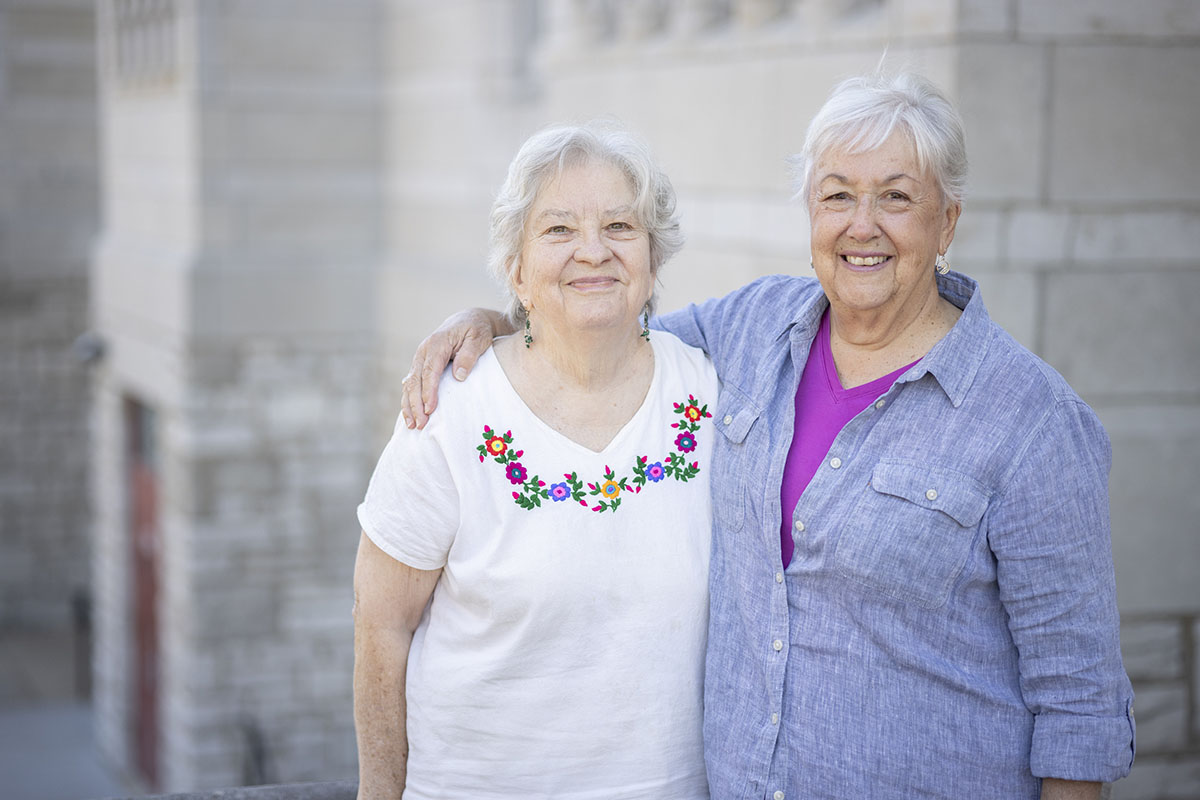Discalced Carmelites discuss papal document on contemplative women religious
An historic meeting among Discalced Carmelites in St. Louis in April helped the order to get a better pulse on its understanding of a papal document outlining new guidelines for contemplative religious communities.
More than 160 Carmelites representing 56 communities from the United States, Canada and Finland gathered for the April 26-28 meeting to seek clarity on “Vultum Dei Quaerere” (“Seeking the Face of God”), a document issued by Pope Francis last summer to increase unity among contemplative religious communities and help them renew their life and mission in the Church. Father Saverio Cannistrà, the Carmelites’ superior general, came from Rome for the meeting, which was held at the Sheraton Westport Chalet.
The document, called an apostolic constitution, includes a dozen directives on various points of life within contemplative religious communities, such as prayer and formation, silence, solitude, aestheticism, means of communication and the relationship among monasteries. The document includes a mandate that all monasteries join a federation to assist in facilitating formation/association and meeting needs through sharing of assets and exchanging members. It also outlined criteria needed for a monastery to retain juridical autonomy.
“In these past decades, we have seen rapid historical changes that call for dialogue,” Pope Francis wrote. “At the same time, the foundational values of contemplative life need to be maintained. Through these values — silence, attentive listening, the call to an interior life, stability – contemplative life can and must challenge the contemporary mindset.”
While the Carmelites gathered in St. Louis to seek clarity within their particular order, the document will affect more than 3,300 contemplative religious communities worldwide. These communities of women religious generally live together in a cloister and devote their lives to prayer, through vows of poverty, chastity and obedience, according to their particular charisms and traditions.
The first Carmelites were a group of Christian hermits who settled at Mount Carmel in the Holy Land around the year 1,200. The order’s origins are rooted in simplicity, which explains why there is diversity among the approximately 850 communities worldwide, said Mother Mary Elizabeth, a member of a community in Clinton Township, Mich., near Detroit.
Several examples of that diversity include varying habit styles, constitutions and representation among the associations that provide unity and support for the communities. There also are varying interpretations of the structure of the cloister, or enclosure, which is designed to assist women religious in their prayer life.
“We go back to hermits in the Middle Ages,” Mother Mary Elizabeth said. “So there’s the idea of living a simple contemplative life in a small community, but the details of that vary legitimately from one community to another. One of the helpful things Father General told us is to bear in mind this document is addressing 3,300 different contemplative communities all over the world, of different backgrounds. Don’t think that necessarily every (point) is addressed to us.”
Contemplative communities now await a formal instruction from the Vatican Congregation for Institutes of Consecrated Life and Societies of Apostolic Life. While its unclear how long that will take, the instruction will replace “Verbi Sponsa,” a 1999 instruction on contemplative life and cloistered nuns. Once religious orders receive the instruction, they will begin the process of applying it within their communities.
Mother Marya, prioress of the Discalced Carmelites in St. Louis, noted that one of the fruits of the meeting in St. Louis has been sharing ideas and advice, and discovering “how much we have in common. We’d think we’d be focusing on our differences, but we’re all Carmelites and we all live in community and have similar problems and similar joys. We’re sharing that and it’s working out quite lovely.”
For some Carmelites, this was their first time leaving the monastery — with the exception of routine medical visits — since entering their communities. Sister Celine, from Loretto, Pa., and Mother Mary Baptist of Hague, N.D., both live in communities that include papal enclosure — meaning the rules for enclosure are defined by the Holy See — and needed to seek permission from the Vatican to attend the meeting in St. Louis.
“In this gathering what has struck me in a very good sense is the passion for God, and passion for our vocations,” said Sister Cecelia of Reno, Nev. “It’s so vivid for me — it’s everyone, no exception. The way of living that out is different, and that’s OK. That’s what this meeting is for — we accept, we respect the way you live. There are wonderful examples of unity and diversity here.”
“You see joy in everybody here,” said Sister Judy of Baltimore, Md.
RELATED ARTICLE(S):BEFORE THE CROSS | Discalced Carmelites: Making everywhere a place of encounter with God
An historic meeting among Discalced Carmelites in St. Louis in April helped the order to get a better pulse on its understanding of a papal document outlining new guidelines for … Discalced Carmelites discuss papal document on contemplative women religious
Subscribe to Read All St. Louis Review Stories
All readers receive 5 stories to read free per month. After that, readers will need to be logged in.
If you are currently receive the St. Louis Review at your home or office, please send your name and address (and subscriber id if you know it) to subscriptions@stlouisreview.com to get your login information.
If you are not currently a subscriber to the St. Louis Review, please contact subscriptions@stlouisreview.com for information on how to subscribe.





